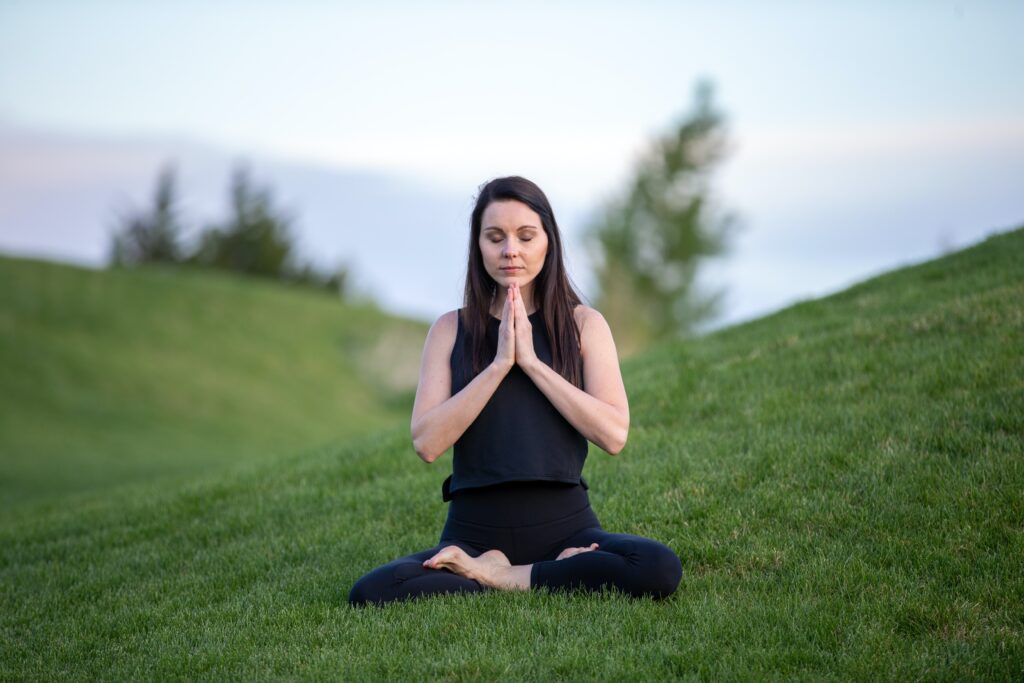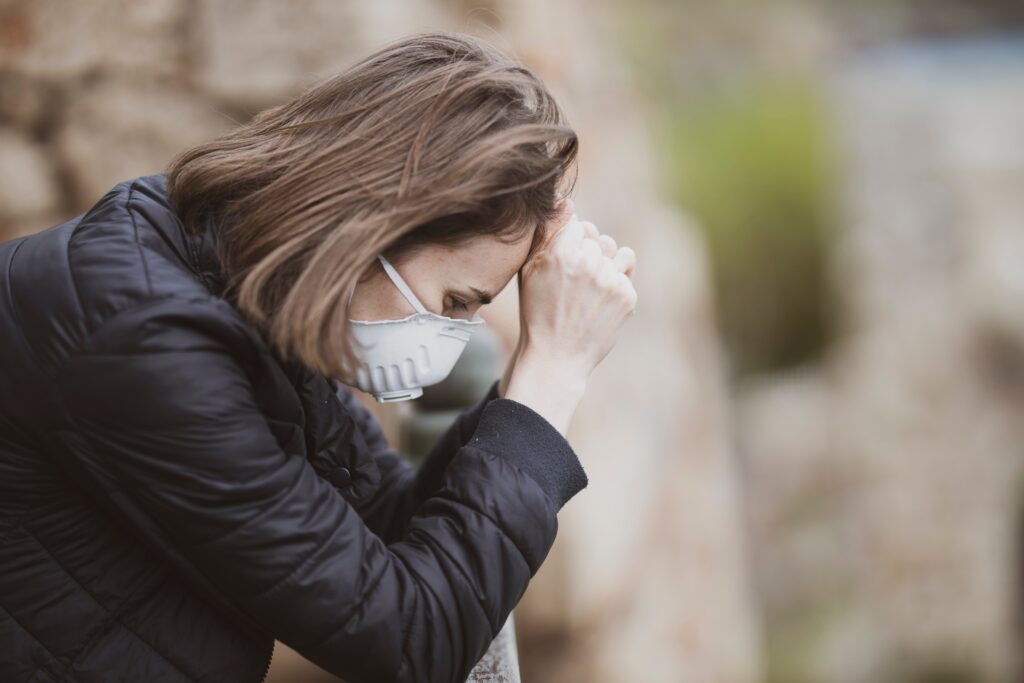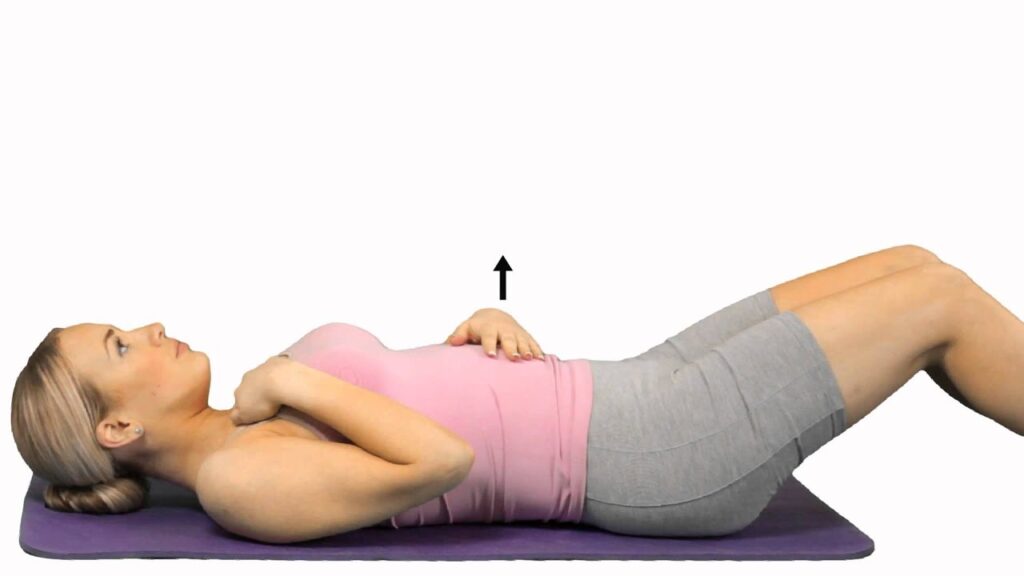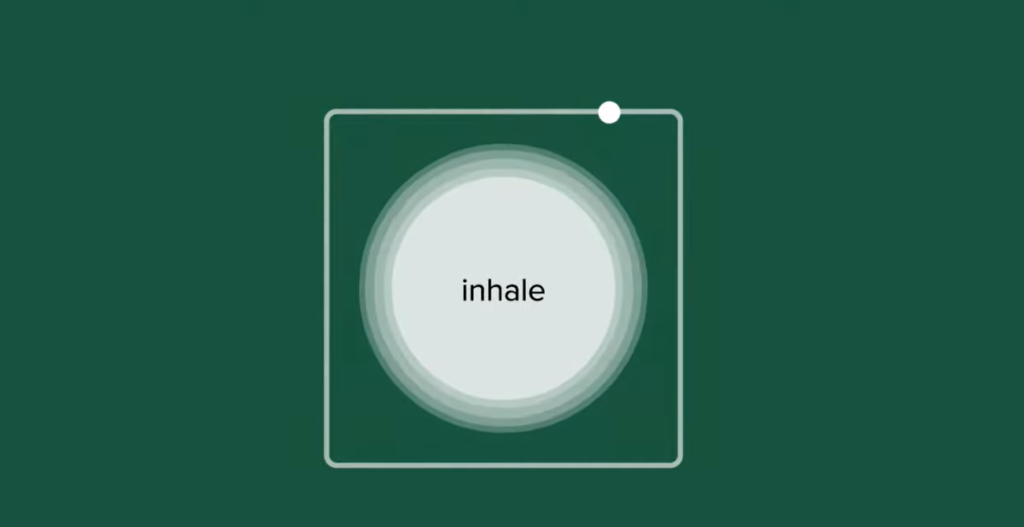5 Breathing Exercises For Stress Relief and Relaxation
Lifestyle • May 10, 2022 • 12min read

Did you know that almost all emotional states last less than 90 seconds?
Dr. Jill Bolte Taylor says that during this small period you can watch and feel the emotions circulating, and then see them leaving.
Stress and anxiety are types of emotions that may be defied by realizing their evanescent nature. The harm caused by these mental states may last for decades and rev up the aging process.
Stress and anxiety can affect your breathing pace making it more frequent which leads to high blood pressure, tension, and possible future heart issues.
Yet, there are several methods of relieving stress and anxiety levels. One of these stress-relieving methods is deep and slow breathing. Taking a deep cleansing breath in stressful and seemingly uncontrollable situations may bring restfulness.
This article is a proper breathing 101 to help you reduce stress levels and withstand anxiety.
Stress And Breathing
Our brains are capable of performing several functions at once without failing. One of these vital functions is breathing which is always controlled by our brains without us realizing it.
However, we can take the control of our breathing turning it into a remedy for numerous health issues while relaxing our bodies and easing stress levels.
So what is happening with our bodies while we are under constant stress? Or when we are unexpectedly stressed because of the loss of loved ones or alarming news?
Stress is a natural response of our body to internal and external stressors- that are harmful thoughts, fear, constant panic attacks, health problems, and even toxic relationships.
While in the state of stress our bodies expose “fight-or-flight” responses or acute stress responses. This process helps us survive stressful situations. In response to stress and anxiety, cortisol levels rise resulting in a heart rate increase, high blood pressure, and quickened breathing rate.
The respiratory system is doing a very important function by providing the body with oxygen and removing carbon dioxide waste from the body. But stress and anxiety cause nose and lung airways to narrow. Hence, a person under stress may experience shortness of breath and rapid breathing.

In the same way that stress affects our breathing making it more frequent and harmful to our well-being, mindful and deep breathing may bring restorative effects.
With breathing exercises, you always know your next step and follow it with full concentration on your breathing only. This helps you erase the uncertainty between the present and the future. Your mind stops ruminating about past occurrences and building up future apprehensions.
Breathing exercises help you come back to yourself and exist only in the present moment. Mindful breathing unlocks the whole capacity of your organism, lungs, and nose fighting stress and cleansing your mind and body.
Breathing techniques help millions of people to cope with stress during global hardships, pandemics, family problems, or inner conflicts. These exercises are an integral part of yoga and meditation which establish self-esteem.
Here are 5 types of breathing exercises to reduce stress and bring calmness into your daily life.
The Effects Of Deep Breathing Technique On Stress
The diaphragm is a large muscle under the lungs. When you inhale, this muscle moves downwards and narrows making space for the lungs to expand and fill with air. When you exhale it moves up making the air leave your lungs.
When you are practicing deep or diaphragmatic breathing your lungs get filled with more air, helping your body to clean itself more efficiently. During deep breathing (also known as “belly breathing”), you allow your stomach to rise and fall, actively participating in the breathing process.
There are several ways of deep breathing. Yet, there are basic steps for effective diaphragmatic breathing.
- To start with, lie down on any flat surface (the floor or your bed) with a pillow under your head and your knees. This will help you feel comfortable in the laying position.
- Relax your neck, shoulders, and chest.
- Place one hand in the middle of your upper chest and the other hand right beneath the rib cage.
- Inhale the air through your nose and feel your stomach rising while you breathe. You will feel your hand moving up.
- Remember not to engage your shoulders and chest in the breathing process, They should stay still while your stomach gets filled with air.
- Exhale with your mouth by tightening your abdominal muscles. You will feel your stomach falling downwards. Your shoulders and chest should be still.
It is not news that fresh air is crucial for our bodies with several benefits including
- Better cognitive function
- Improved blood pressure
- Improved heart rate
- Strong immune system
- Clean lungs
- Restfulness
If it is possible do this exercise a few times a day. If you are a beginner and feel that your breath is overcontrolled, take your time and increase the frequency of the exercise every other day.
Studies show that people practicing deep (or diaphragmatic) breathing for one week significantly reduced the detrimental effects of stress and depression through relaxation and meditation.

How to practice diaphragmatic or deep breathing
4-7-8 Breathing Or “Calming Breathing” Technique
The 4-7-8 breathing technique is also known as “calming breathing”. This slow and deep breathing method was developed by Dr. Andrew Weil. 4-7-8 breathing technique is one of the well-known methods of connecting your breathing to your cognitive functions Also 4-7-8 is referred to as a type of mindfulness bringing relaxation and stress reduction.
These are the steps to start your calming breathing practice
- Find a comfortable place to sit with a straight back or lie down.
- Exhale with a whooshing sound to release all the air in your lungs.
- Inhale through your nose to the count of 4. Try to concentrate on counting and breathing.
- Hold your breath for 7 seconds.
- Exhale through your mouth with a whoosh sound to the count of 8.
- Repeat this cycle 4 times.
Practice the 4-7-8 breathing method at least twice a day with 4 breath cycles. After several weeks you may increase the frequency of this breathing exercise up to 8 cycles a day. But Dr. Weil does not recommend more than 4 or 8 cycles a day.
If you have sleeping disorders or experience sleep deprivation 4-7-8 breathing may be a good solution. Practice this slow breathing to wind down 30 minutes before you go to sleep. This may balance your sleep latency and improve your overall sleep pattern.
After a month you may start noticing numerous physiological and psychological improvements. The benefits of the 4-7-8 breathing technique include
- Reduced anxiety
- Lower heart rate
- Improved digestion
- Lower blood pressure
- Improved sleep

Practice the 4-7-8 breathing technique with Dr. Weil
4-4-4 Or “Box Breathing” Technique
4-4-4 or “box breathing” is a type of paced breathing helping to cope with stressful situations and hinder panic attacks. Box breathing is not only a strong stress reliever but also helps to avoid destructive thoughts and concentrate on peaceful and mindful breathing.
To get started with 4-4-4 breathing exercises, find a comfortable place to sit or lie down. Make sure your neck is straight and your feet touch the floor while sitting. Bring your mind back to yourself and try to concentrate on counting and your breathing pace. Start with the following steps.
- Put one hand above your chest and the other hand above your abdomen. This will help you to feel your stomach rising and falling while deep breathing.
- Exhale all the air from your lungs through your pursed mouth. Do this to the count of 4.
- Hold your breath to the count of 4.
- Inhale through your nose and again slowly count to 4. Feel the air filling your lungs and stomach. Try not to raise your shoulders.
- Hold your breath for another 4 seconds focusing on counting the numbers.
- Exhale slowly all the air through your mouth to the count of 4.
- Repeat this process 2 times a day with 3-4 rounds.
If you are new to this breathing technique you will probably feel lightheaded after the practice. This is a normal state for beginners. To ensure you enjoy the stress-relieving benefits of box breathing afterward, stay sitting for a few seconds to restart normal breathing. But remember, everything becomes easy with practice.
After 4 cycles of 4-4-4 breathing a day, you will feel
- Reduced anxiety
- Stress reduction
- Eased panic attacks
- Better sleeping patterns
- Concentration, less ruminating thoughts
- Low cortisol levels. Balanced levels of this hormone will help you improve your mood.

Alternate-Nostril Or Cleansing Breathing
Alternate-nostril breathing (ANB) is a type of Pranayama breathing practice. It is also referred as to cleansing breathing for it cleans up the “stale” energy and stress.
This is a yoga breathing technique that will help you lower stress levels and bring relaxation. Being a mindfulness and re-focusing method alternate-nostril breathing is widely practiced by millions of people to calm the body and mind.
As simple as the name suggests, alternate-nostril breathing presents breathing through one nostril at a time. Start this breathing exercise by sitting in a comfortable place and focusing on your breathing. Follow the steps
- Close your eyes and try to feel the air you breathe.
- Cover your right nostril with your thumb.
- Put your index and middle fingers on your forehead.
- Now put your left nostril with your ring finger. Bend your little finger if it is comfortable.
- With your right nostril covered, completely exhale the air through your left nostril.
- Release your right nostril and cover your left nostril with a ring finger.
- Inhale deeply through your right nostril. Feel your stomach rising and your lungs filling with air.
- Exhale through your left released nostril.
- Repeat this cycle 3-4 times.
You can practice alternate-nostril breathing 2-4 times a day. After several weeks of practice, you may feel better concentration and lower stress levels. 15-minutes of ANB practice with 30 students showed considerable improvements in
- Lower risk of cognitive impairment
- Lower levels of anxiety
- Reduced fear or discomfort levels
- Improved breathing
- Lower blood pressure
- Better concentration
The most comfortable and safe place to exercise alternate-nostril breathing is at home.
However, it is possible to experience side effects after ANB exercises. In case you feel fatigued, dizzy, have nausea, have pains in your chest, or experience fainting, stop the breathing practice and consult your doctor.

Practice guided alternate-nostril breathing
Visualization Technique And Tonglen Breathing
Tonglen meaning “taking and sending” is a type of yogic breathing exercise. It is also known as visualization practice, helping to cope with hardships and stressful situations.
As we have already learned, breathing exercises help to stay concentrated and stressless. Whereas visualization helps us create an altered state where we find restfulness. Hence, by combining these two techniques you can quickly achieve mindfulness and stress relief.
To start with, sit comfortably in a quiet place where nothing can distract your relaxed mind. Then follow these steps.
- Close your eyes. If you feel uncomfortable with closed eyes, just keep them semi-open or wide open.
- Take a deep and slow breath through your nose.
- Concentrate on the cleansing air running through your nose, throat, and then lungs.
- Hold your breath for 2-4 seconds. Imagine yourself in a peaceful place or meadow.
- Exhale imagining your stress and anxiety leaving your body and mind over your shoulders.
- Repeat this cycle 2-4 times, each time getting rid of more tension and stress.

Tonglen or visualization breathing to release stress and anxiety
Tips To Improve Daily Breathing
Usually, our minds and body are disconnected during breathing. Yet, mindful breathing is the only tool to connect them and gain healing effects, reduced stress levels, and depression. Here we offer you 5 tips to help you maintain healthy breathing and a restful mind.
- Practice meditation and yoga. These two mindfulness exercises are natural antioxidants. Along with keeping your mind and body in shape, they reduce toxins and cortisol levels improving your breath and reducing stress levels.
- Take a deep breath whenever you feel tension. Deep or diaphragm breathing will help you release toxins from your body and fill the lungs with fresh air. Cleaning your body of toxins will bring relaxation.
- Drink enough water. Staying hydrated during the whole day will keep your lungs healthy to function better.
- Stay active. Physical activity will not only help you build up muscles but will also keep your lungs and heart healthy. As a good side effect, it will also increase your daily mood and motivation.
- Follow the 3-3-3 rule. When you feel distracted and overwhelmed with harmful thoughts, simply sit down, take a deep breath, and name 3 things around you. Then name three sounds you hear. Eventually, move three parts of your body- fingers, foot, or head. Then concentrate on your breathing and name a number when you exhale. You will feel coming back to the present moment and slowly harmonizing with your breathing.
Final Thoughts
They say water carved out the Grand Canyon. And this is a great allusion to how continuous and conscious breathing may restore what was damaged during our “unconscious existing”. It will help us reduce stress, get rid of anxiety, and hinder toxic thoughts.
Same as with meditation, deep and cleansing breathing will become a habit. It can be practiced on your way to work or on a long trip. Dr. Andrew Weil believes that after 2-3 weeks of deep restorative breathing you may be reluctant to open your eyes and return to your routine state.
Practice the above-discussed breathing techniques to reduce stress and maintain healthy aging.



